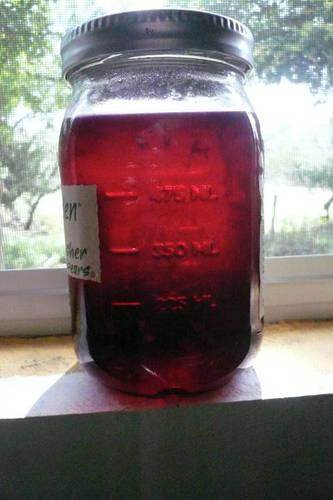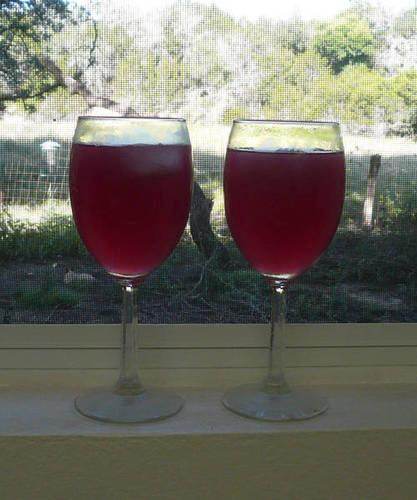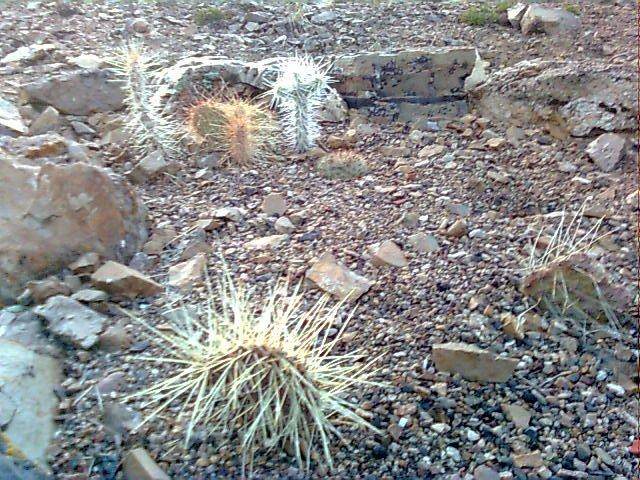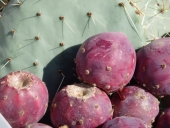
 28
28









Buy Our Book! Food Web: Concept - Raising Food the Right Way. Learn make more food with less inputs
Off Grid Homesteading - latest updates and projects from our off grid homestead
 5
5




 2
2




 6
6






Idle dreamer
 7
7




Buy Our Book! Food Web: Concept - Raising Food the Right Way. Learn make more food with less inputs
Off Grid Homesteading - latest updates and projects from our off grid homestead
 3
3




Idle dreamer
 5
5




Tyler Ludens wrote:I actually didn't cook the fruit, only the sugar and water, to make syrup, which was added to the prickly pear and vodka infusion. But good to know the spines dissolve; they scare me.
Buy Our Book! Food Web: Concept - Raising Food the Right Way. Learn make more food with less inputs
Off Grid Homesteading - latest updates and projects from our off grid homestead
 2
2




Zone 9b
 1
1




Idle dreamer
 2
2




Juniper Zen wrote:I've been buying tuna at the grocery store. Yummy! Anyone have a good place to buy paddles from and start propagating on my own?
Buy Our Book! Food Web: Concept - Raising Food the Right Way. Learn make more food with less inputs
Off Grid Homesteading - latest updates and projects from our off grid homestead

 2
2




 1
1




Idle dreamer
 3
3





"Also, just as you want men to do to you, do the same way to them" (Luke 6:31)
 2
2




Tyler Ludens wrote:During droughts our Prickly Pears, even the native ones, can look sad and sometimes die. Like all plants, they do need some water to survive!
Buy Our Book! Food Web: Concept - Raising Food the Right Way. Learn make more food with less inputs
Off Grid Homesteading - latest updates and projects from our off grid homestead
 5
5




Abe Connally wrote:By the time the prickly pear are dying, the trees are long gone.
 4
4




 3
3




Abe Connally wrote:The mighty prickly pear. Great for vegetable, fruit, dyes, living predator fences, erosion control, medicine and drought insurance. Talk about stacking functions!
![Filename: final.jpg
Description: [Thumbnail for final.jpg]](/t/49834/a/32033/final.jpg)
I wrestled with reality for 36 years, and I'm happy to say I finally won out over it.
 1
1




 1
1




 1
1




Check out Redhawk's soil series: https://permies.com/wiki/redhawk-soil
 2
2




Gay Hullar wrote:Are all paddle cactuses that produce tunas considered Prickly Pears and are they all edible? Or are there particular identifiers for edible cactus? I see them growing all over here in Southern CA but I'm not sure if all are edible.
Buy Our Book! Food Web: Concept - Raising Food the Right Way. Learn make more food with less inputs
Off Grid Homesteading - latest updates and projects from our off grid homestead
 1
1




Lori Ziemba wrote:
Abe Connally wrote:The mighty prickly pear. Great for vegetable, fruit, dyes, living predator fences, erosion control, medicine and drought insurance. Talk about stacking functions!
Oh Abe, you are living my dream---the cactus farm/winery! Funny you should post this today, I just broke out my first bottle of last year's wine:
Buy Our Book! Food Web: Concept - Raising Food the Right Way. Learn make more food with less inputs
Off Grid Homesteading - latest updates and projects from our off grid homestead
 2
2




Alison Sargent wrote:Does anyone know how it is used as a plant dye?
Thanks!
I wrestled with reality for 36 years, and I'm happy to say I finally won out over it.
 3
3




 1
1




Together is our favorite place to be






 1
1




"Also, just as you want men to do to you, do the same way to them" (Luke 6:31)
 1
1




 7
7




 3
3




Idle dreamer
 1
1




Steve Farmer wrote:Abe, what about other succulents. Aloe vera seems equally drought tolerant, self propagates by suckers, and has medicinal uses. Not as effective as windbreak or barrier as doesn't grow so tall or spiky, but is much much easier to handle. Agaves?
I'm putting aloes, prickly pears and soon agaves in at my patch where I'm planting trees. Also some other thing (pictured) that looks like a relative of the aloe but is absolutely rampant at propagating itself in the garden. Haen't yet observed how well it handles drought but I suspect it will be pretty good. For me without expert knowledge it's a case of throwing lots of mud and seeing what sticks.
Buy Our Book! Food Web: Concept - Raising Food the Right Way. Learn make more food with less inputs
Off Grid Homesteading - latest updates and projects from our off grid homestead
 8
8




Peter Heffernan wrote:Beware!
Prickly Pear rendered 58 MILLION ACRES UTTERLY UNUSABLE in Australia in the early 19th century, because birds so quickly spread seads everywhere!
Be very careful not to make the solution into THE PROBLEM!
Buy Our Book! Food Web: Concept - Raising Food the Right Way. Learn make more food with less inputs
Off Grid Homesteading - latest updates and projects from our off grid homestead
 1
1




Tyler Ludens wrote:I'm a fan of Sotol, a plant native to here which has an edible stem. It was one of the staple foods of the native peoples.
Buy Our Book! Food Web: Concept - Raising Food the Right Way. Learn make more food with less inputs
Off Grid Homesteading - latest updates and projects from our off grid homestead
 1
1





 3
3





 3
3




Check out Redhawk's soil series: https://permies.com/wiki/redhawk-soil
 6
6




Check out my rocket stove cores! https://rocketstovecores.com/
 1
1




Abe Connally wrote:
I am very familiar with Sotol, and we used the dried stalks for making shade structures and things. You can also train them as they grow to make really neat curved sticks.
But, I had no idea you could eat them. How do they taste, Tyler?
Idle dreamer
 3
3




Peter Heffernan wrote:Beware!
Prickly Pear rendered 58 MILLION ACRES UTTERLY UNUSABLE in Australia in the early 19th century, because birds so quickly spread seads everywhere!
Be very careful not to make the solution into THE PROBLEM!
Daniel
 5
5




Xisca - pics! Dry subtropical Mediterranean - My project
However loud I tell it, this is never a truth, only my experience...
 2
2




Steve Farmer wrote:Abe, what about other succulents. Aloe vera seems equally drought tolerant, self propagates by suckers, and has medicinal uses. Not as effective as windbreak or barrier as doesn't grow so tall or spiky, but is much much easier to handle. Agaves?
I'm putting aloes, prickly pears and soon agaves in at my patch where I'm planting trees. Also some other thing (pictured) that looks like a relative of the aloe but is absolutely rampant at propagating itself in the garden. Haen't yet observed how well it handles drought but I suspect it will be pretty good. For me without expert knowledge it's a case of throwing lots of mud and seeing what sticks.
I wrestled with reality for 36 years, and I'm happy to say I finally won out over it.

|
What we think, we become. - Buddha / tiny ad
The new purple deck of permaculture playing cards
https://www.kickstarter.com/projects/paulwheaton/garden-cards
|






